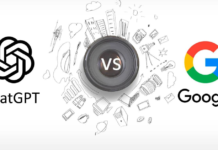
Like any Internet connection, fiber-optic Internet download speeds rely upon your connection. Not all fiber connections are made equivalent, much like broadband. Unlike copper cables, fiber-optic cables cannot be used for longer distances.
Internet provided by fiber optic cables is faster than normal broadband speeds in the USA. You can download more faster with a fiber internet connection. Fiber Internet is more dependable than copper and less inconsistent than Wi-Fi.
In the United States, fiber network access is accessible to organizations pretty much all over the place. Fiber web for home clients is restricted to explicit areas and is still in developing stage. New fiber suppliers, for example, Google Fiber have entered the market and have goal-oriented extension plans. At speeds up to 1 Gigabit per second, fiber web conveys a lot quicker downloads than broadband.
For instance, if your broadband download speed is 50Mbps, (normal U.S web speeds are barely 94 Mbps in 2020), downloading a game, 100 songs, a full HD quality film or 100 photographs is up to multiple times faster with a 1 Gigabit fiber connection.
What is Fiber Optic Internet?
As the name suggests, the fiber optic is a web that is provided through uncommon filaments or strands that are packaged into optic links. Unlike copper cables, which are regularly utilized for link or DSL connections, fiber optic cables are made out of plastic or glass strands that are utilized to communicate light moves and reflects along with the twists and bends in the optical link.
The light communicates data through encoded light signals, or twofold. It is then decoded to introduce data (pictures, text and sounds) to the end client. This specific transmission strategy can move more information than copper, which was initially intended to communicate just voice (i.e. early telephone utilities). With regards to the present advanced necessities, the fiber optic web is altogether snappier and more solid than its archetypes. A fiber-optic web connection permits its clients to transfer and communicate data at speeds that outperform conventional web mediums, for example, copper-based DSL.
Utilizing fiber-optic cables, which group glass strands to communicate information, a fiber-optic web connection offers rapid transfer and download speeds. Fiber web speed does not debase over longer distances, similar to copper-based web associations. Furthermore, a fiber connection takes into consideration a more noteworthy information limit while restricting misfortune and impedance. As it turns out to be more accessible to fulfil client requests, fiber optic web is turning into the principle wellspring of rivalry for broadband, DSL, and satellite internet.
Is Fiber Internet Available Everywhere?
Shockingly, fiber network access is not accessible to home clients in every local location. Some bigger internet providers have scaled out cross country arrangements, fundamentally Verizon and AT&T. Google Fiber is the new layer in the fiber game. At present, Google offers fiber and TV connection plans to specific regions of Austin, Orange County, Kansas City, Salt Lake City, Charlotte, Nashville, Atlanta, The Triangle, and Provo. Google Fiber intends to extend its services to different urban areas in future.
These fiber ISPs (Internet Service Providers) have some expertise in fiber conveyance to home clients.
Speeds of Different Internet Connection Types
One of the fundamental explanations behind the increasing popularity of fiber optic internet is its speed, or a lot faster information transmission time.
Here is a brisk review of different internet connection types;
Fiber Optic
Up to 10 Gbps (the information transfer rate is up to 10 billion frames per second)
Broadband
Average speed is up to 10 Mbps. Broadband connection provides good speed than its counterparts.
Satellite Internet
Average speed is between 5 to 25 Mbps. Reliability is very poor and has high latency and is expensive to setup.
Fiber optic internet is way better than other types of internet connections. Fiber optic web speeds unmistakably outperform more established web connections.
Does Fiber-Optic Connection Requires a Modem?
Expecting FTTP or FTTH is accessible, you won’t require a modem. You will probably require a comparative gadget, for example, a switch. A fiber-optic web connection will require the utilization of an optical organization terminal (ONT). The ONT converts the light signals into computerized signals that can be utilized to end the line and are transferred to phone, TV, and web purposes.
How is Fiber Internet Connection Different from other Types of Connections?
The principle distinction is that fiber does not use electric flow like different sorts of web connections. It uses light which is then transferred through the fiberglass.
Web advances have significantly changed the transfer time of data. Here is a short abstract of the primary kinds of connections that are as still used and how they work:
Dial-up Internet
The Dial-up internet is far more uncommon than it was 20 years prior, uses existing phone lines, which are generally made of copper. It uses the perceptible recurrence of the landline, which is the reason you hear a progression of signals and commotions when it interfaces. Also, you can’t use the phone and the web simultaneously in light of the fact that they share a similar line.
The normal speed of dial-up connections is around 56 Kbps (that is about 0.05 Mbps) for downloading and uploading.
DSL Internet
DSL web likewise utilizes phone lines to send information. In opposite to dial-up connections, DSL utilizes indistinct frequencies, so it doesn’t contend with phone connections.
Normal speeds for DSL are somewhere in the range of 1 and 100 Mbps for downloading and up to 20 Mbps for uploading.
Satellite web
Satellite web utilizes a similar line that your satellite TV connection uses, known as “coaxial link.”
Overall, fiber optical cables provide a reliable and most faster internet speeds than other types of internet connections. It wouldn’t be wrong to say that fiber optic connection should be your first preference, if fiber connections are available in your area. With rapid advancements in technology, a lot of other mediums will be introduced in the market which will be able to transfer data at a much faster pace.









